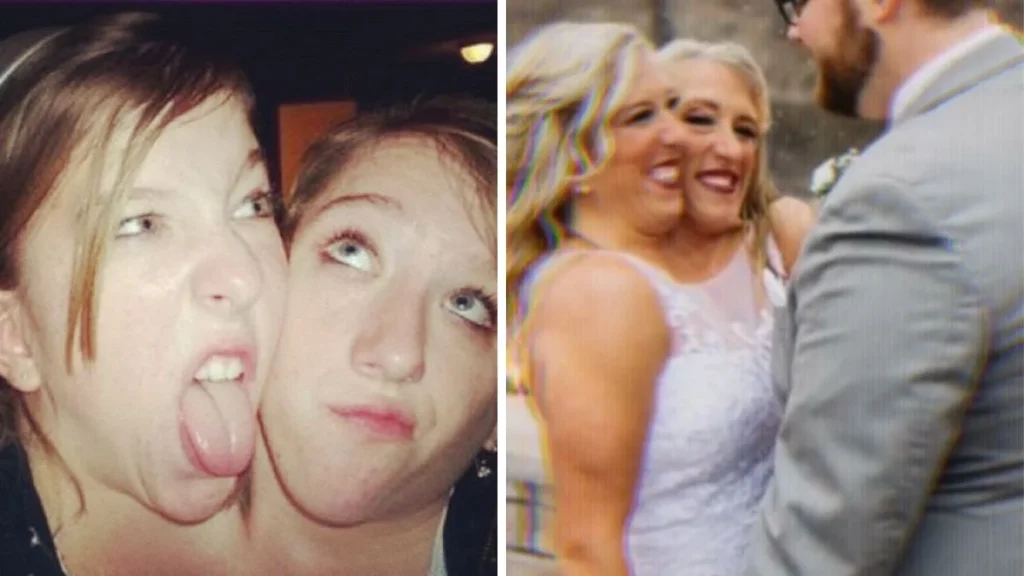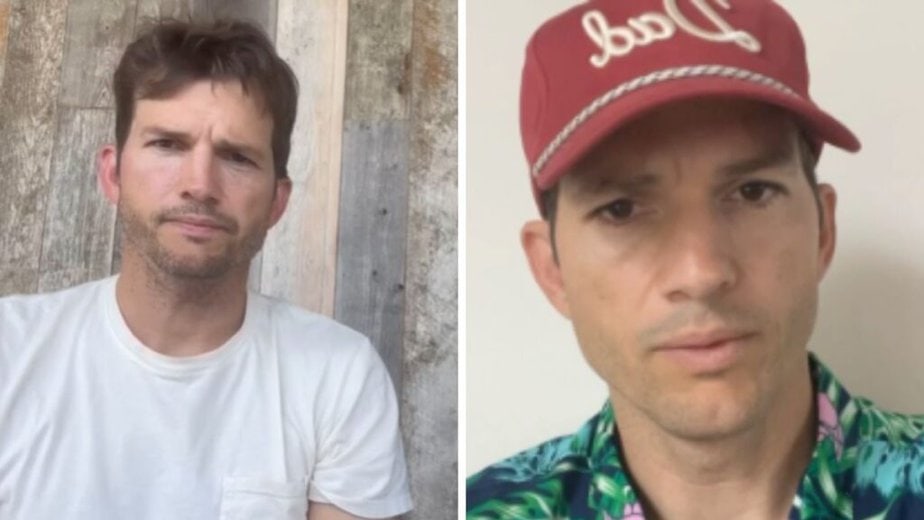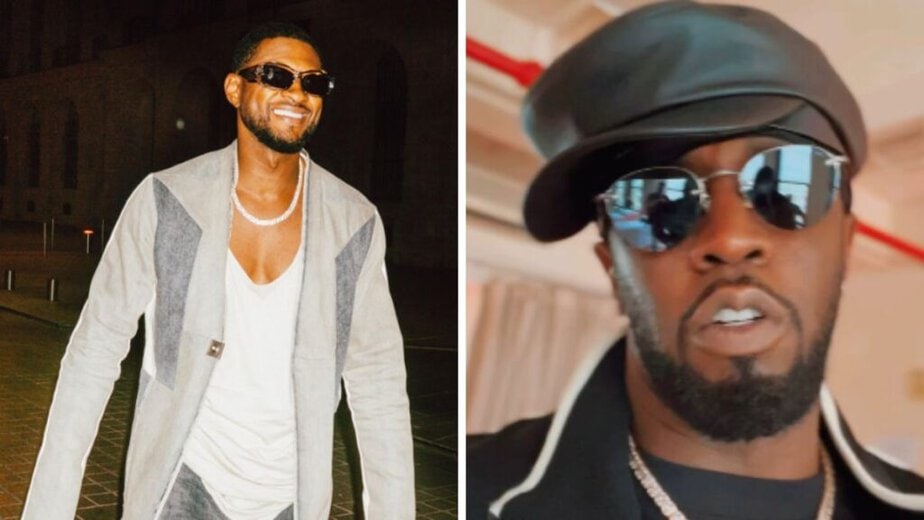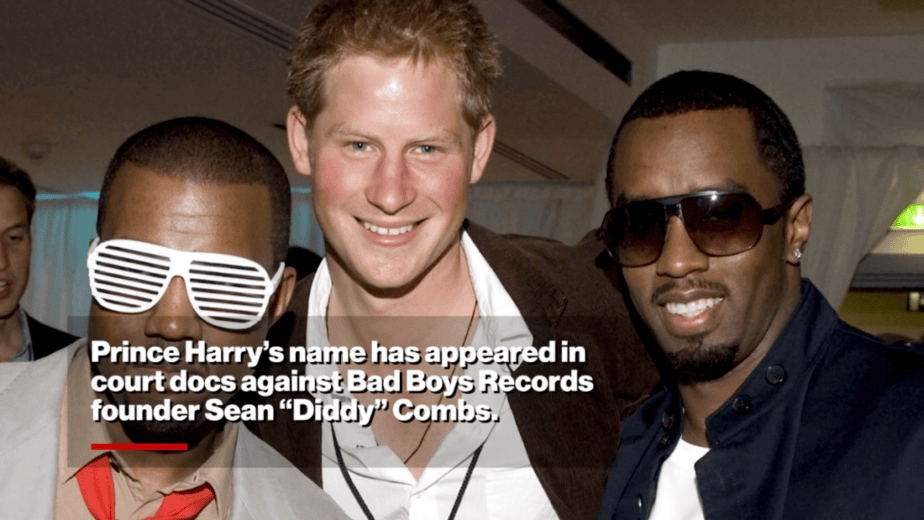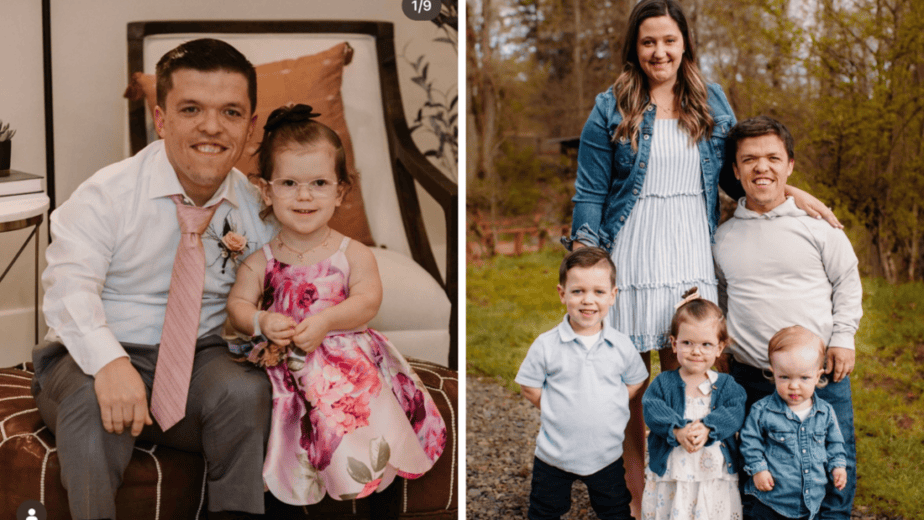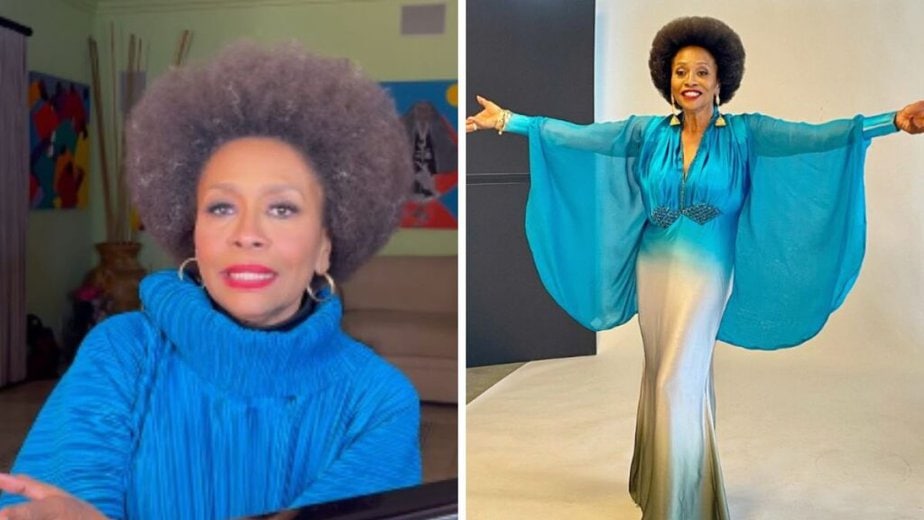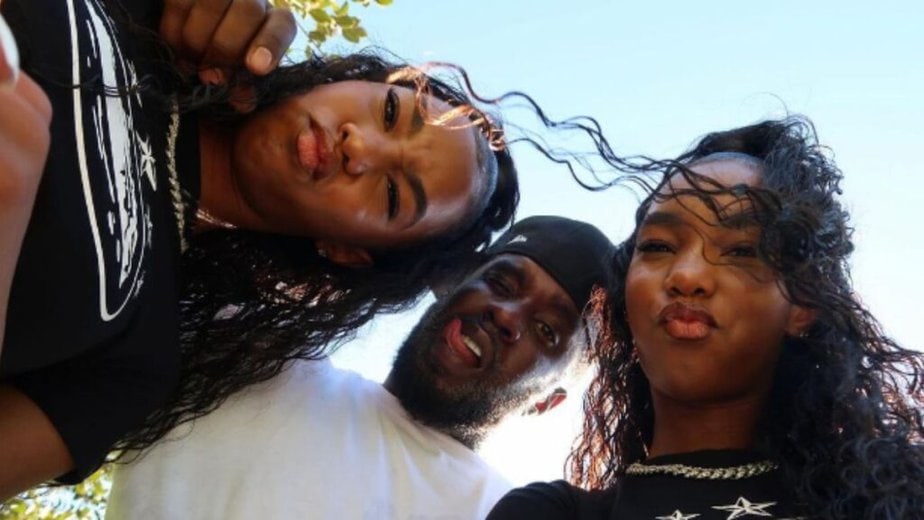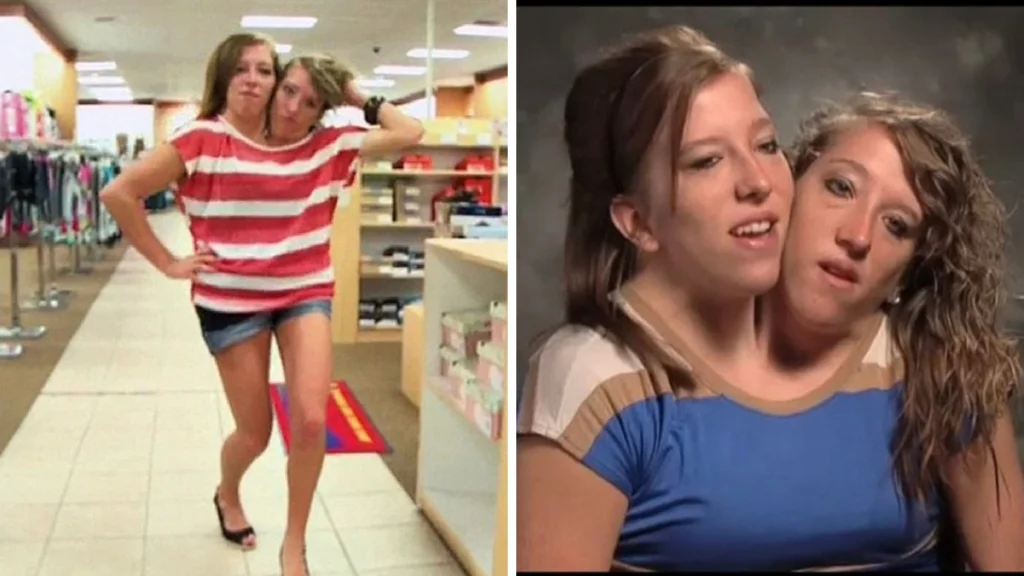
Abigail Loraine “Abby” and Brittany Lee Hensel shocked the world when they became the first known conjoined twins to survive infancy.
The twins had a 1% chance of survival past their first year of life, and now they’re 34 years old and still thriving.
They’re a medical marvel, with doctors being unable to figure out how they’ve lived for so long.
They made headlines recently when it was revealed that Abby married a man named Josh Bowling in 2021… but Brittany did not.
The story of these two is strange and twisted… but how they’ve persevered over the years is truly amazing.
Born on March 7, 1990, in Carver County, Minnesota, the Hensel twins are dicephalic parapagus twins, meaning they are conjoined twins with two separate heads and necks but share a single body with two arms and two legs.
Their life, from their early days to their current adventures, offers a profound insight into the complexities and wonders of human biology, the strength of the human spirit, and the deep bonds of sisterhood.
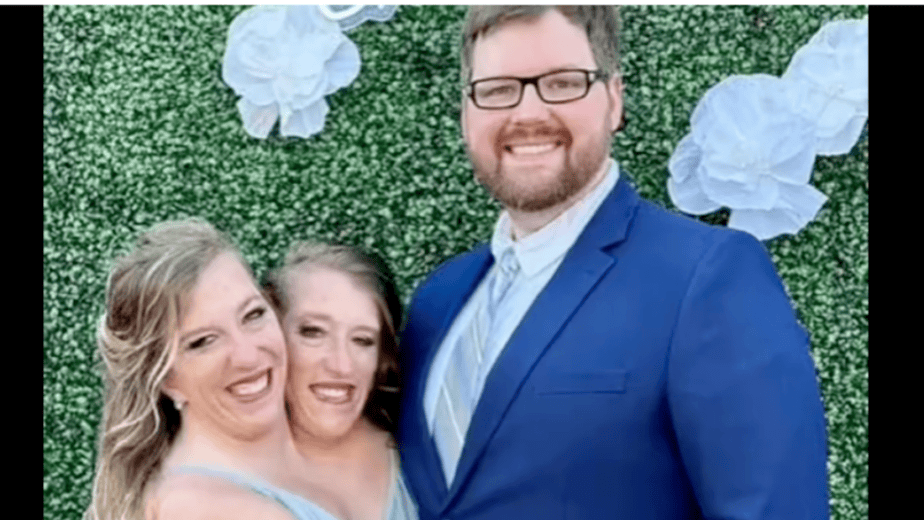
Early Discoveries and Challenges
The Hensel twins’ condition was discovered during their mother Patty’s labor and delivery.
For the entirety of her pregnancy, she was under the impression that she was having one child. During delivery, her doctors were shocked to feel three arms instead of two.
The news that Patty was carrying conjoined twins was undoubtedly a shock to the Hensel family, including their father, Mike Hensel.
However, the family’s unwavering commitment to their daughters’ well-being and happiness was evident from the very beginning. From the outset, Abby and Brittany’s parents decided to raise them to be as independent and self-reliant as possible.
Conjoined at the torso, Abby and Brittany each control one side of their shared body. This unique physical condition means that coordination and cooperation are necessary for all of their physical activities, from walking and clapping to swimming and driving.
The twins have two hearts, two sets of lungs, two stomachs, and a shared circulatory and nervous system, among other duplicated and shared organs.
Although they were born with three arms, they had the one non-functional arm between their torsos removed around the time they were one year old.
Their early life was marked by numerous medical evaluations, surgeries to correct spinal issues and to give them a better chance of physical mobility, and constant attention from medical professionals fascinated by their anatomy and physiology.
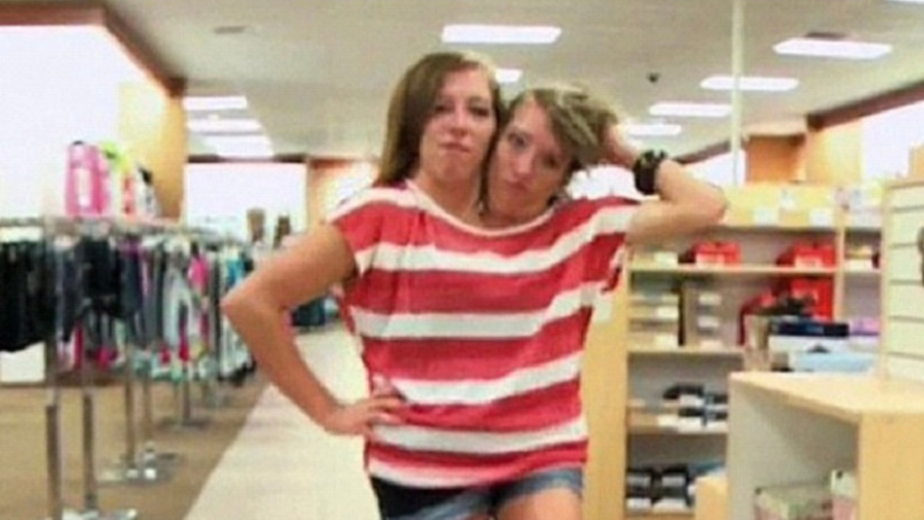
Growing Up Hensel
Growing up in a small Minnesota town, Abby and Brittany were raised in a nurturing environment surrounded by family and friends who saw them not as a medical curiosity but as two unique individuals with distinct personalities, dreams, and goals.
The Hensel family also includes a younger brother and sister, and Abby and Brittany had a fairly normal family life.
Their parents worked tirelessly to ensure that their daughters could lead as normal a life as possible, encouraging them to participate in various activities, including sports, music, and other extracurricular activities, and to pursue their educational goals.
The twins attended a public school in Minnesota, where they were treated like any other students by their teachers and classmates. This normalcy was a testament to their community’s acceptance and the positive environment their parents had fostered for them.
In a documentary featuring their days in high school, their teachers explained that in more practical subjects like math, the girls completed one assignment and were graded together. However, in classes like English, they were expected to complete separate assignments and write separate papers. In that class, they received two separate grades.
The girls were obviously in a unique situation in school, but it seems as though their teachers worked to come up with solutions that worked for them.
Abby and Brittany learned to coordinate their movements with remarkable precision early on, a skill that allowed them to engage in activities such as playing piano, volleyball, and even riding a bicycle.
Their ability to live as independently as possible was a significant focus of their upbringing, and they developed their own methods for completing everyday tasks and academic assignments despite the fact that they’re conjoined.
Public Attention and Education
Abby and Brittany’s unique situation garnered national and international attention from a young age.
They were featured in various media outlets, including documentaries and talk shows, which highlighted their daily lives, challenges, and successes.
They even had a reality show that featured their transition from college to working as teachers in a school.
This exposure brought them into the public eye, but it also allowed them to advocate for a greater understanding and acceptance of people with physical differences.
Education played a pivotal role in Abby and Brittany’s early life.
They were excellent students, known for their determination, intelligence, and positive attitudes. They navigated schoolwork, homework, and exams with the same level of cooperation and coordination that they applied to physical activities.
Their educational journey was not without its challenges, but with the support of their family, teachers, and classmates, they excelled academically, eventually graduating from high school and pursuing higher education.
The Power of Two
The early life of Abby and Brittany Hensel is a testament to the power of love, support, and determination.
From their parents’ decision to raise them as individuals with unique identities to their own determination to live a full and active life, the Hensel twins have defied expectations at every turn.
Their story is not just about the medical wonder of their conjoined bodies but about their journey as two sisters who, together, have faced the world with courage, humor, and an unbreakable bond.
Their early years laid the foundation for a life of adventure, learning, and growth.
As they transitioned from childhood into adolescence and then into young adults, Abby and Brittany continued to inspire those around them with their resilience, their kindness, and their zest for life.
The story of Abby and Brittany Hensel’s early life is a powerful reminder of the incredible capabilities of the human spirit when faced with extraordinary circumstances.
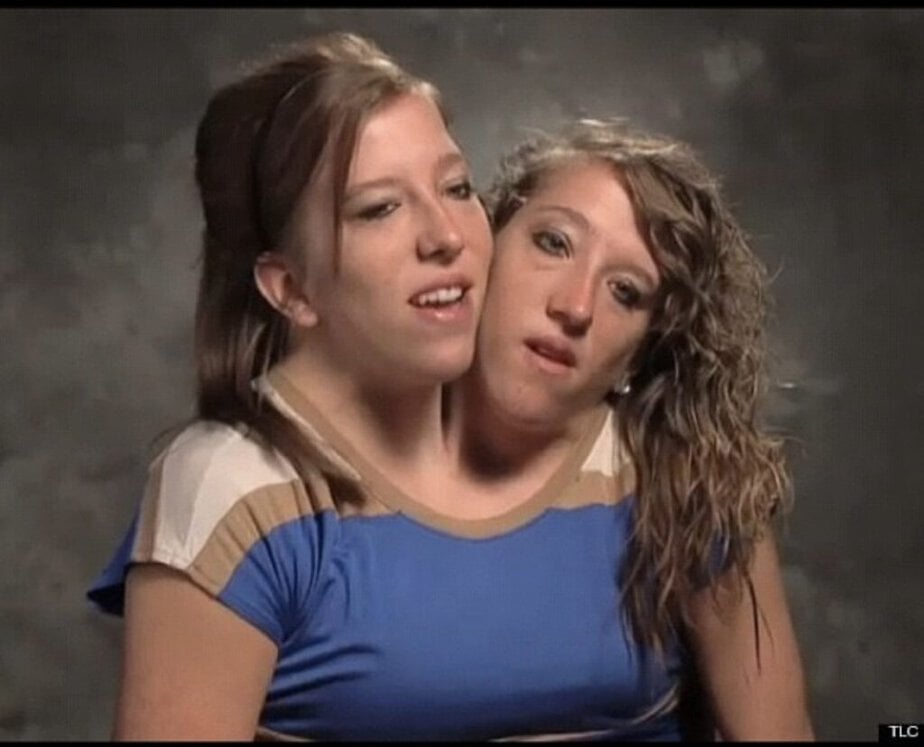
Body Talk
Abby and Brittany’s conjoined nature is the result of an extremely rare phenomenon where the embryo only partially splits into two individuals.
Despite their shared body, each twin controls and senses her half of their body. This means that anything to the right of their shared spinal column is controlled by Abby, and everything to the left is under Brittany’s control.
They have two spines that merge at the pelvis, two hearts, four lungs (two pairs), two stomachs, and a shared liver, among other organs.
Notably, below the waist, their body merges completely, and they share reproductive organs and a digestive tract. Given their unique anatomy, their coordination for simple tasks such as walking, clapping, or running requires an extraordinary level of synergy.
Doctors haven’t been able to explain how they’re able to simultaneously control the bottom half of their body with both of their brains, which are believed not to be able to communicate.
However, it seems as though they are inexplicably able to communicate via their brains, because they often finish each other’s sentences and know what the other is thinking or feeling.

Coordination and Daily Activities
From a logistical standpoint, the mechanics of how Abby and Brittany manage daily activities is a subject of fascination.
Early on, the twins had to master the art of coordination to perform basic movements.
Walking, for example, requires each twin to simultaneously coordinate with the other to maintain balance and motion.
This seamless cooperation extends to other activities such as driving, where Abby controls everything on the right of the driver’s seat, and Brittany controls the left.
The twins have also mastered other tasks with impressive dexterity, from typing on a keyboard to playing musical instruments.
Their ability to perform such activities is a testament to their years of practice and their innate ability to synchronize their actions.
This synchronization is not just physical but also cognitive, as they often complete each other’s sentences and share thoughts almost as quickly as they arise.
Health and Medical Care
The Hensel twins’ health is a complex issue due to their conjoined nature.
From birth, they have been under the care of a team of medical professionals who monitor their health and well-being closely.
They have undergone surgeries in their early years to improve their quality of life, including a spinal surgery to correct scoliosis and another to provide them with a better range of motion.
When the girls were young, Brittany’s spine stopped growing prematurely. Because of that, Abby had a spine surgery to have the growth of her spine surgically halted.
Their unique anatomy means that illnesses can affect them differently. For instance, one twin can be sick with a common cold while the other remains healthy. This disparity presents unique challenges in terms of treatment and medication, as what affects one twin can potentially harm the other.
Personal Identity and Social Interaction
Despite their shared body, Abby and Brittany have distinct personalities, tastes, and preferences.
This individuality extends to their choices in clothes, hobbies, and even their educational pursuits. They have worked out a system of compromise when it comes to decision-making, whether it’s about what to wear or where to eat.
Their wardrobe is custom-made by a family friend to accommodate their two necks and heads but merges into a single outfit at the waist.
Socially, Abby and Brittany are known for their outgoing and engaging personalities. They attended public school, participated in extracurricular activities, and went on to complete college education.
Their story challenges societal norms about identity, autonomy, and what it means to live a fulfilling life despite physical differences.
Psychological and Emotional Dynamics
The psychological and emotional aspects of Abby and Brittany’s life are as complex as their physical coordination.
They share an unbreakable bond and exhibit an exceptional level of empathy towards each other. Their ability to negotiate, compromise, and support each other is evident in every aspect of their lives.
This dynamic is crucial not only for their emotional well-being but also for the practical aspects of their day-to-day activities.
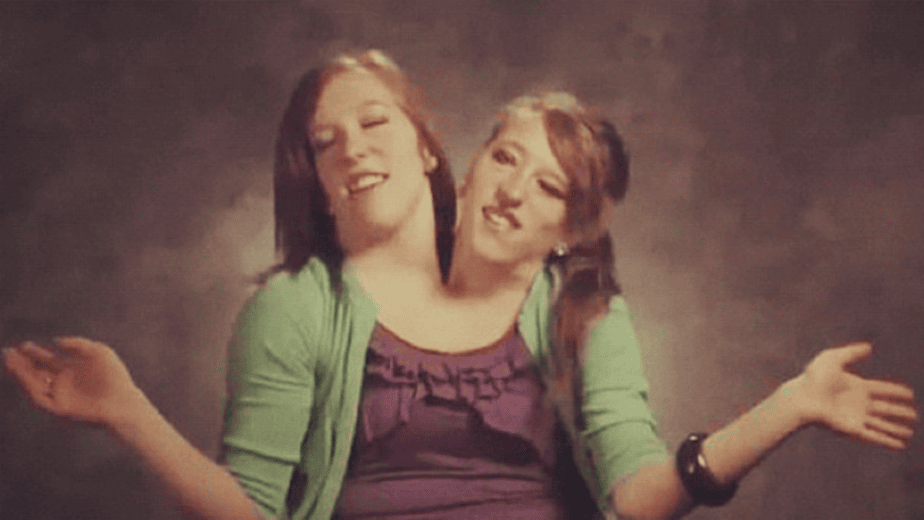
Career and Independence
Following their graduation, Abby and Brittany embarked on a career in education, showing a passion for working with children.
Their work life, like all other aspects of their existence, necessitates a high degree of coordination and cooperation. They navigate their professional responsibilities with the same determination and positivity that have marked their approach to personal challenges.
Abby and Brittany attended college as two individuals, however now as adults they receive one salary for their work as 5th grade teachers.
They were required to obtain two separate teaching licenses with the State of Minnesota, which has led many to believe that they should be compensated with two separate salaries as teachers.
However, Abby and Brittany said that they understand why that’s not the case.
Abby explained to BBC that they’re technically doing the job of one person because they can only teach one class at one time.
That being said, they do think they bring a unique perspective to the classroom. One primarily does the teaching at any given time, while the other can assist students.
The Significance of Their Story
The way Abby and Brittany Hensel’s bodies work, both independently and in unison, provides profound insights into human biology, the power of adaptability, and the essence of individuality within a shared existence.
Their life challenges conventional wisdom about the limitations of the human body and spirit, offering a powerful example of what it means to live fully and joyously in the face of extraordinary circumstances.
Their story is not just a medical case study but a narrative about identity, unity, and the strength of the human will.
Abby and Brittany Hensel have navigated their unique path with grace, dignity, and an unwavering sense of self, making their story a testament to the incredible possibilities of the human condition.
Abby and Brittany Hensel’s journey to college is a narrative filled with challenges, triumphs, and the breaking of societal norms.
Born as dicephalic parapagus twins, sharing a body but with distinct heads and personalities, their life story has been one of constant adaptation and learning.
Their transition from high school to college was a significant step, not only for their personal and academic growth but also as a testament to their determination and the support system that backed them every step of the way.

Preparing for College
As the twins approached the end of their high school years in their hometown of New Germany, Minnesota, the idea of attending college became a tangible goal.
Abby and Brittany had always been ambitious and driven, excelling academically and participating in various extracurricular activities. The decision to go to college was a natural progression in their journey of self-improvement and independence.
However, they weren’t quite sure about leaving their hometown.
In their hometown, they weren’t under constant scrutiny. They weren’t photographed by people around town, or stared at. Everyone in their small town knew them and vice versa.
It allowed them to feel more normal growing up, and they explained that they didn’t like going to crowded places because they didn’t like being stared at, which made college nerve-wracking for them.
The preparation for college involved more than just academic readiness; it required careful consideration of the physical and social logistics of university life.
The twins and their family visited colleges, met with administrators, and worked out accommodations to ensure that their college experience would be as enriching and normal as possible.
Their choice of college would need to be an institution that not only met their academic needs but also was prepared to accommodate their unique physical circumstances.
Choosing Bethel University
Abby and Brittany chose Bethel University in St. Paul, Minnesota, for their undergraduate studies.
Bethel, a private Christian university, offered them a welcoming community and a supportive environment that valued diversity and inclusion.
The university worked closely with the twins and their family to ensure that their transition to college life would be smooth, addressing any potential challenges related to their accommodations, class schedules, and physical navigation of the campus.
And as for tuition, they had an interesting dilemma to figure out.
Would they pay two separate tuitions for their two separate degrees or just one?
Interestingly, they ultimately came to the decision to pay one single tuition, but two registration fees.
And that’s just the beginning for some of the odd dilemmas they’re forced to face as conjoined twins.
Although they have two passports, two social security numbers, and two driver’s licenses, they only buy one seat when they fly on a plane.
Life at College
Starting college is a significant transition for anyone, marked by challenges such as adjusting to a new level of academic rigor, living away from home for the first time, and forming a new social circle.
For Abby and Brittany, these challenges were compounded by the public’s curiosity about their conjoined bodies and how they navigate the world together. Despite these potential obstacles, they embraced college life with enthusiasm and openness.
Abby and Brittany’s college experience was as rich and full as that of their peers.
They lived on campus, which was an essential part of their college experience, offering them a level of independence they had not previously had.
Their living arrangements were carefully planned to accommodate their needs, with modifications made to their dorm room to ensure comfort and accessibility.
In terms of their academics, Abby and Brittany pursued a major in education. They wanted to pursue different concentrations in education, but ultimately decided that it wouldn’t work logistically with their course load.
They attended classes together, participated in group projects, and took exams just like any other student.
Their presence in class was a learning experience not just for them but for their peers and professors, who were exposed to the twins’ extraordinary capability to work together and contribute valuable insights and perspectives.
Socially, Abby and Brittany were still well-received by their peers as they moved into college.
College provided them with a broader social environment where they could form new friendships and engage in various campus activities.
They navigated social interactions with grace and humor, quickly becoming known for their positive attitudes and the unique perspectives they brought to conversations.
Overcoming Challenges
That being said, the transition to college life was not without its challenges. Navigating a larger campus required physical endurance and logistical planning, especially in terms of getting to and from classes and participating in campus events.
Academically, the twins had to adapt to the increased workload and the expectations of college-level coursework, which they managed through diligent study and effective communication with their professors.
Another challenge was maintaining their privacy and handling public curiosity. Abby and Brittany had been in the public eye since they were young, and college brought them into contact with a larger, more diverse group of people.
They handled questions about their condition with patience and openness, using their visibility to educate others about difference and acceptance.
Achieving Success
Abby and Brittany’s college years were marked by personal and academic success.
They graduated from Bethel University with degrees in education, a testament to their hard work, resilience, and the support they received from their family, friends, and the Bethel community. Their college graduation was a celebration of their achievements and a milestone that underscored their ability to overcome obstacles and pursue their dreams.
Legacy and Impact
The story of Abby and Brittany going to college is more than just an account of conjoined twins navigating higher education. It is a narrative of breaking barriers, challenging preconceptions, and demonstrating that with determination, support, and a willingness to adapt, it is possible to achieve one’s goals regardless of the challenges.
Their journey through college has left a lasting impact on those who have been part of their story, from their peers and professors at Bethel University to the wider community that has followed their journey through media coverage.
Abby and Brittany have become symbols of courage, perseverance, and the power of a positive outlook, inspiring others to see beyond physical limitations and societal expectations.
Abby and Brittany Hensel’s transition to and success in college is a significant chapter in their remarkable life story.
It reflects not only their individual characters and ambitions but also the importance of a supportive community in achieving one’s goals.
Their college experience showcases their extraordinary ability to adapt, thrive, and inspire, making them role models for anyone facing challenges in pursuit of their dreams.
Embracing the Educational Path
Abby and Brittany’s decision to pursue careers in education was driven by a lifelong passion for learning and a desire to share knowledge with others.
After graduating from Bethel University in Minnesota with degrees in education, they embarked on their teaching careers, determined to overcome any challenges that their unique physical condition might present in a classroom setting.
Their journey into teaching speaks volumes about their mutual understanding, impeccable communication, and the shared commitment to their chosen profession.
Navigating the Classroom
In the classroom, Abby and Brittany Hensel exhibit an extraordinary ability to work together seamlessly, a skill honed over a lifetime of shared experiences.
They teach as a team, with each twin bringing her own strengths, perspectives, and teaching style to the table. This dynamic allows them to offer a rich and varied educational experience to their students.
Their physical coordination in managing classroom activities is nothing short of remarkable.
From writing on the board to navigating through the classroom, every action is a coordinated effort.
They have adapted teaching methods to suit their abilities, using technology and innovative teaching aids to facilitate their instruction and engage their students.
Building Relationships with Students
Abby and Brittany have always been adept at building strong relationships with others, and this skill translates beautifully into their roles as educators.
They are known for creating an inclusive, supportive, and engaging learning environment where every student feels valued and encouraged to participate.
Their own experiences of overcoming obstacles and challenging societal norms empower them to instill confidence and resilience in their students.
Many feared that Abby and Brittany would have trouble teaching fifth graders, due to the middle school reputation of bullying and mocking people with physical differences.
However, it seems like that hasn’t been the case for Abby and Brittany as teachers.
Instead, the twins’ unique situation serves as a powerful lesson in diversity, acceptance, and cooperation for their students.
By simply being who they are, Abby and Brittany challenge preconceived notions about difference and ability, fostering an atmosphere of understanding and empathy within their classroom.
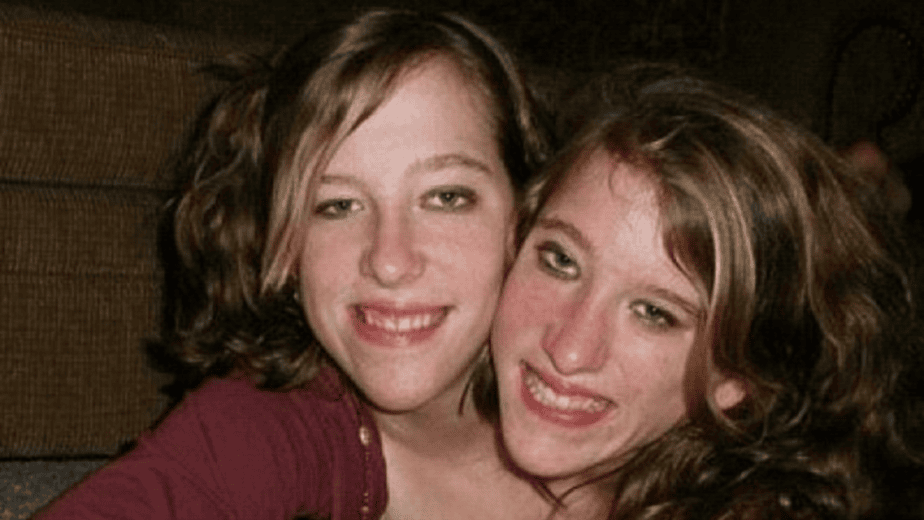
Overcoming Challenges
Teaching as conjoined twins comes with its set of challenges, from physical logistics of two people teaching at one time within the classroom to addressing the curiosity and questions from students and parents.
Abby and Brittany have approached these challenges with patience, openness, and a sense of humor. They have always been open about their condition, using it as an opportunity to educate others about diversity and acceptance.
Their approach to handling questions and curiosity about their condition is to address it directly and honestly, setting the tone for a respectful and inclusive classroom culture.
This openness not only demystifies their physical appearance but also redirects the focus to their capabilities and the subject matter at hand.
Collaborative Teaching and Planning
Abby and Brittany’s teaching method is a testament to their unparalleled ability to collaborate. They plan their lessons together, ensuring that their teaching styles and methods are cohesive and complementary.
This planning process involves a great deal of communication and compromise, reflecting the same principles they instill in their students about teamwork and cooperation.
In the classroom, they often take turns speaking or sometimes speak in unison, which captivates their students and enhances the learning experience.
Their ability to work as one while maintaining their individuality is a dynamic model of effective collaboration for their students.
Impact Beyond the Classroom
Abby and Brittany’s influence extends far beyond the walls of their classroom.
They are role models not only for their students but for people around the world. Their story of perseverance, teamwork, and achievement in the face of unique challenges inspires people to look beyond physical appearances and limitations.
As educators, Abby and Brittany have taken on a role that allows them to shape young minds and encourage a more inclusive and empathetic future generation.
Their presence in the educational field challenges traditional notions of what it means to be a teacher and demonstrates the profound impact that determination, cooperation, and a positive attitude can have on society.
A Story of Inspiration and Determination
The narrative of Abby and Brittany working together as teachers is a compelling chapter in their extraordinary lives.
It showcases not just how they navigate the practicalities of teaching with their unique condition but also how they embody the values of education in their approach to life and learning.
Their journey into teaching highlights their dedication to making a difference and leaves a lasting impression on everyone they encounter.
Through their work, Abby and Brittany Hensel have become ambassadors of resilience, teamwork, and unconditional acceptance.
Their story is a powerful reminder of the capacity for human beings to adapt, collaborate, and thrive, regardless of the challenges they face.
In the classroom and beyond, Abby and Brittany continue to teach us all invaluable lessons about the true meaning of strength, unity, and the endless potential of the human spirit.
Abby and Brittany are staunchly private, refusing to speak out about their private lives in a public forum.
Most recently, the twins made headlines when it was revealed that Abby had gotten married in 2021… but Brittany hadn’t.
The story went viral with people wondering how that would work logistically.
Was Abby’s husband, Josh, married to Brittany too?
Do they all sleep in the same bed?
Can they have kids?
What happens when Brittany wants to get married?
A tweet went viral claiming to be Abby and Brittany explaining how their intimate relationships work, but it was later proven to be fake.
The two are much more private about their personal life than the other conjoined twins who have lived into adulthood, Carmen and Lupita Andrade, who talk about every aspect of their lives on their TikTok page.
That being said, when Abby and Brittany were teenagers, they participated in a documentary where they said that they planned to have kids one day.
However, they share the same reproductive organs, so it’s unclear how that would work logistically.
At the time, they said that while their reproductive organs work, they weren’t worried about the logistics of motherhood yet because they were only 16 years old.
Now that they’re 34 and Abby is married, it seems like this issue has most likely become more of a pressing issue on the horizon for the twins.
Given their private lives, though, we may never know if Abby and Brittany decide to become moms or what that will look like for them.
